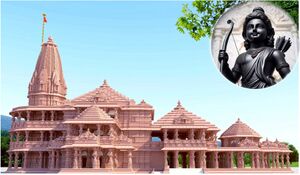Nāda
By Swami Harshananda
Nāda literally means ‘vibration,’ ‘sound’.
Nāda as per Śaivism and the Śāktā tantras[edit]
Though the word ‘nāda’ is generally used in the sense of sound, both unmanifested and manifested, it has been employed more as a technical term in Śaivism and the Śāktā-tantras. Before creation, the Śiva-Śakti principle, the ultimate Reality, is one only, without a second. When this Reality, the equivalent of Brahman of the Advaita Vedānta, starts reflecting on Itself[1] a throb or a stir is created. This stir named as spanda, develops further as ‘nāda’ or vibration and gets concentrated as ‘bindu’.[2] Further creation evolves out of it.
Nāda as per Music[edit]
When the word is taken to mean sound, several varieties of it are described in the technical works related to music and yogic practices. For instance:
- Ghaṇtānāda - sound of a bell
- Śaṅkhanāda - sound of a conch
- Bherīnāda - sound of a kettle-drum
- Veṇunāda - sound of a flute
- Meghanāda - sound of clouds or thunder
- Others
References[edit]
- The Concise Encyclopedia of Hinduism, Swami Harshananda, Ram Krishna Math, Bangalore

